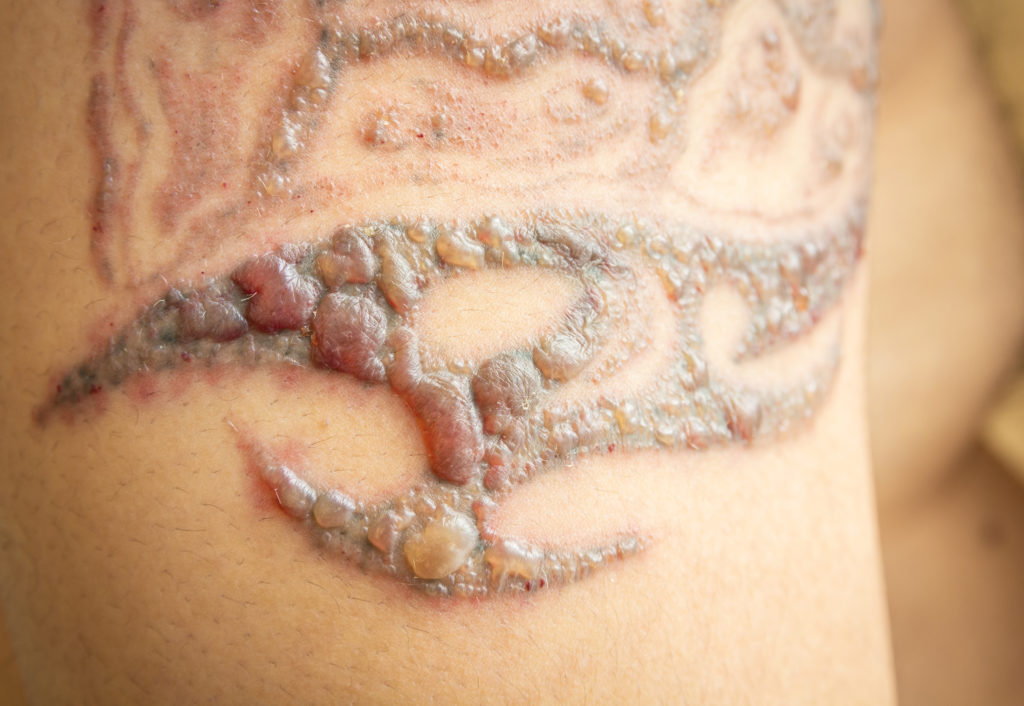How to Ease Pain After Laser Tattoo Removal?

Strong 8k brings an ultra-HD IPTV experience to your living room and your pocket.
Removing a tattoo through laser technology has become increasingly popular due to its effectiveness and minimal invasiveness. While the results are often satisfying, the process can come with varying degrees of discomfort, especially post-treatment. Managing this pain efficiently and safely is crucial for a smooth recovery and optimal outcomes. Laser tattoo removal is a medically supervised procedure that requires post-care steps, often guided by doctors, to ease discomfort and promote faster healing. At the end of the process, many individuals who seek Laser Tattoo Removal in Dubai benefit from a structured, professional aftercare routine led by experienced physicians.
Why Does Pain Occur After Laser Tattoo Removal?
Laser tattoo removal uses high-intensity light beams to fragment tattoo ink particles embedded deep within the skin. As these particles break apart, your immune system begins to clear them out gradually. However, this process generates controlled trauma to the skin, leading to temporary inflammation, heat, and discomfort—similar to a mild burn or abrasion.
This sensation can vary depending on factors such as:
Tattoo size and location
Skin sensitivity
Depth and density of ink
Doctor-Led Techniques to Ease Pain After Laser Tattoo Removal
Professional Cooling Protocols
After every laser session, dermatologists often apply advanced cooling systems to the treated area. These include:
Cryogen sprays: Used before and after laser pulses to maintain skin temperature.
Medical-grade cold air machines: Direct streams of cold air to reduce inflammation and numb the skin.
Sterile Dressing and Bandaging
Immediately after the session, doctors cover the treated area with sterile, non-stick dressings. This helps:
Protect the skin from external irritants
Reduce friction-induced pain
Prevent infections that can intensify discomfort
Elevation and Rest Protocols
In cases where tattoos are located on limbs (e.g., ankles or arms), doctors may recommend elevating the area for several hours post-treatment. This helps reduce swelling and discomfort. Medical professionals also advise temporary restrictions on physical activity, ensuring the area isn’t overstimulated or overused, which might aggravate pain.
Customized Skincare Regimens
Physicians often prescribe specific medical-grade cleansers and moisturizers. These are designed to:
Hydrate and cool the skin
Maintain a neutral pH level
Reduce inflammatory response
Benefits of Doctor-Guided Pain Relief
When it comes to managing discomfort after laser tattoo removal, physician oversight offers a range of benefits:
Precision Pain Management: Tailored approaches based on patient skin type, tattoo location, and individual pain threshold.
Improved Healing: Accelerated recovery with reduced risk of scarring or complications.
Consistent Monitoring: Regular follow-ups ensure the pain doesn’t escalate unnecessarily.
Doctor's Guidelines
To avoid worsening the pain, doctors advise against:
Scratching or touching the area unnecessarily
Applying unapproved creams or ointments
Exposing the area to direct sunlight
Wearing tight clothing over the treated area
Doctor-Endorsed Movement
Limit Physical Exertion
Doctors usually recommend refraining from activities like:
Intense workouts
Long walks or runs
Lifting heavy objects
Controlled Stretching
If the tattoo is on a joint or bendable area (like elbows or knees), minimal and gentle stretching may be advised after a few days. This prevents skin from becoming overly stiff, but it must be performed under medical supervision.
Increasing fluid intake
Consuming anti-inflammatory foods
Avoiding processed or irritating foods that may disrupt healing
Advanced Techniques Used by Doctors to Minimize Pain
Q-Switched Lasers with Pulse Regulation
Modern Q-switched lasers used in clinics are equipped with pulse regulation features. This technology allows doctors to:
Minimize skin damage
Reduce heat buildup
These calibrated settings make the process less painful compared to outdated systems.
Fractionated Laser Approach
Some doctors combine fractionated lasers with traditional systems for layered tattoos. This strategy helps break the tattoo down in stages, which reduces the intensity of each session and subsequently eases post-procedure pain. Doctors don’t just focus on the immediate aftermath.
Collagen-boosting protocols to improve skin elasticity
Regular assessment for pigmentation issues
Skin-strengthening techniques that minimize long-term sensitivity
Final Thoughts
Pain after laser tattoo removal is temporary and manageable, especially when treated under professional guidance. By following a structured, doctor-led protocol that includes cooling systems, sterile care, and tailored movement restrictions, patients can significantly ease discomfort and accelerate healing. Consistent monitoring, hydration advice, and the use of precision laser technology further contribute to a smoother and more comfortable experience.
Note: IndiBlogHub features both user-submitted and editorial content. We do not verify third-party contributions. Read our Disclaimer and Privacy Policyfor details.


